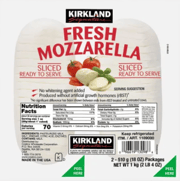
The federal government officially entered a shutdown at 12:01 am. Wednesday after lawmakers failed to reach agreement on spending bills. The shutdown has idled the Bureau of Labor Statistics, the agency responsible for releasing the inflation data needed to calculate the 2026 cost-of-living adjustment (COLA). All but one of the bureau's 2,055 employees have been furloughed, meaning the crucial September inflation report won't arrive on schedule.
The Social Security Administration had planned to announce the 2026 COLA on October 15, when the Bureau of Labor Statistics was scheduled to release its September inflation report. Without that final piece of data, seniors across the country are left wondering how much extra they'll have in their monthly budgets come January.

Not the first time seniors have been left waiting
While frustrating, this delay isn't unprecedented. The last and only time the annual COLA was delayed was in October 2013, also during a government shutdown. That shutdown lasted 16 days over funding disputes related to the Affordable Care Act.
The good news? Even during shutdowns, the wheels of government don't completely stop. A shutdown should not impact Social Security benefit payments, and new benefit verification and the issuing of new cards pause during a shutdown, so new recipients may see delays in processing their claims. Your monthly check will still arrive as expected because Social Security benefits have a permanent funding source and aren't affected by Congress' annual budgeting process.
"A government shut down could potentially delay an announcement of the COLA, but remember, the data is for September and that has already been collected"
What the numbers are telling Americans so far
Even without the September data, experts have a pretty good idea of where the 2026 COLA is heading. The Consumer Price Index for Urban Wage Earners and Clerical Workers (CPI-W) rose by 2.8 percent in August 2025 compared with one year ago, and current estimates suggest the final COLA will land somewhere between 2.7% and 2.8%.
The Senior Citizens League (TSCL) is calling for a 2.7% cost-of-living adjustment next year, while independent Social Security and Medicare policy analyst Mary Johnson settled on a 2.8% raise in 2026.
To put that in practical terms, a 2.8% increase would mean an additional $52 per month for someone receiving the average Social Security benefit. The average monthly benefit was $1,864.87 in August, so that would bring it to about $1,917 per month.
Also read: A 2.8% Social Security COLA is on the horizon for 2026—but will it keep up with Medicare’s rising costs?
The Medicare reality check
Here's where the news gets more complicated. While a 2.7% to 2.8% COLA sounds encouraging, rising healthcare costs threaten to gobble up much of that increase. According to the 2025 Medicare Trustees Report, the standard Part B premium is expected to increase from $185 to $206.50 in 2026. That's a jump of $21.50 per month, or about 11.6%.
For many beneficiaries, this Medicare premium increase alone could consume nearly half of their COLA increase. Those receiving lower Social Security benefits face an even tougher situation. As Johnson notes in her analysis, if the COLA comes in at 2.7%, a Part B premium jump of $21.50 would consume the entire COLA increase for beneficiaries who receive around $800 or less per month.
Medicare Part B premium increases for 2026
The standard Medicare Part B premium is projected to rise from $185 to $206.50 per month in 2026—an increase of $21.50 or 11.6%.
This would be the largest year-over-year increase since 2022.
For context, Medicare Part B premiums rose by 5.9% in both 2023 and 2024.
Understanding why this announcement matters so much
For seniors, the annual COLA announcement serves as more than just financial news—it's a crucial planning tool. Unlike younger workers who might receive raises or change jobs to boost their income, retirees depend on this once-yearly adjustment to help their fixed incomes keep pace with rising costs.
The timing of both announcements—COLA and Medicare premiums—typically allows seniors to understand their net financial position for the coming year. With one piece of that puzzle missing, many are left wondering whether they should adjust spending plans, consider part-time work, or make other financial decisions.
Also read: Big Social Security changes are coming in 2026—here’s what to know now
While you wait: Practical steps to take
During this period of uncertainty, there are several steps you can take to prepare:
Review your current budget: Take a close look at your essential expenses versus discretionary spending. Identify areas where you could trim costs if needed.
Consider Medicare supplement planning: If you're not already enrolled in a Medicare Supplement plan, this might be a good time to explore your options, especially given the projected premium increases.
Plan for multiple scenarios: Budget for both a modest increase (around 2.7%) and factor in the Medicare premium hike. This gives you a realistic picture of your potential net change in monthly income.
The broader shutdown picture
While this shutdown continues, it's worth remembering that the 2018-2019 shutdown was the longest in US history, stretching on for five weeks. Most government shutdowns, however, last only a few days to a couple of weeks.
During the current shutdown, essential services continue. Air traffic controllers keep planes flying, Social Security checks keep coming, and the mail still gets delivered. The Postal Service operates independently and isn't affected by funding lapses.
National parks remain accessible but with limited services, and while some federal offices are closed, emergency services and other critical functions continue operating.
Did you know?
Did you know?
During the 2013 government shutdown that delayed COLA announcements, the shutdown lasted 16 days and cost the US economy an estimated $24 billion. Despite the delay, Social Security beneficiaries still received their COLA increase on schedule in January 2014.
Historical perspective on COLA increases
To put the projected 2026 increase in context, Social Security cost-of-living adjustments have averaged 2.6% over the past 20 years. The projected 2.7% to 2.8% increase would be slightly above that long-term average.
Recent years have seen more variation than usual. The 2025 COLA was 2.5%, a significant drop from the 8.7% increase in 2023 and the 5.9% boost in 2022—both responses to elevated inflation during the post-pandemic period.
Looking ahead: What comes next
Once the government reopens and the Bureau of Labor Statistics resumes operations, the September inflation data will be released, allowing the Social Security Administration to calculate and announce the official 2026 COLA. The announcement will likely come within days of the government reopening, giving seniors the information they need to finalize their budget plans.
What seniors should know during the COLA delay
- Your January 2026 Social Security payment will still reflect the COLA increase, regardless of announcement delays
- Current estimates suggest a 2.7-2.8% increase, adding about $50-52 to the average monthly benefit
- Medicare Part B premiums are expected to rise by $21.50, reducing the net benefit increase
- Monthly Social Security payments continue uninterrupted during the government shutdown
- The final COLA will be announced within days of the government reopening
Planning for the long term
While waiting for the official announcement, remember that Social Security COLAs are designed to help benefits keep pace with inflation over time. Even modest increases compound over the years, helping protect your purchasing power throughout retirement.
The current delay, while inconvenient, doesn't change the fundamental strength of the Social Security system or your right to receive cost-of-living adjustments. The data has been collected, the calculations will be made, and your benefits will be adjusted accordingly come January.
Read next:
- What to know about this month’s SNAP benefit changes
- Medicare 2026 update: What to know about premiums, benefits, and plan choices
What This Means For You
In the meantime, focus on what you can control: your spending decisions, healthcare planning, and budget preparation. The COLA announcement will come soon enough, and when it does, you'll be ready to make informed decisions about your financial future.
What aspects of the COLA delay are you most concerned about? Are you adjusting your budget planning while waiting for the official announcement? Share your thoughts and experiences in the comments below.






